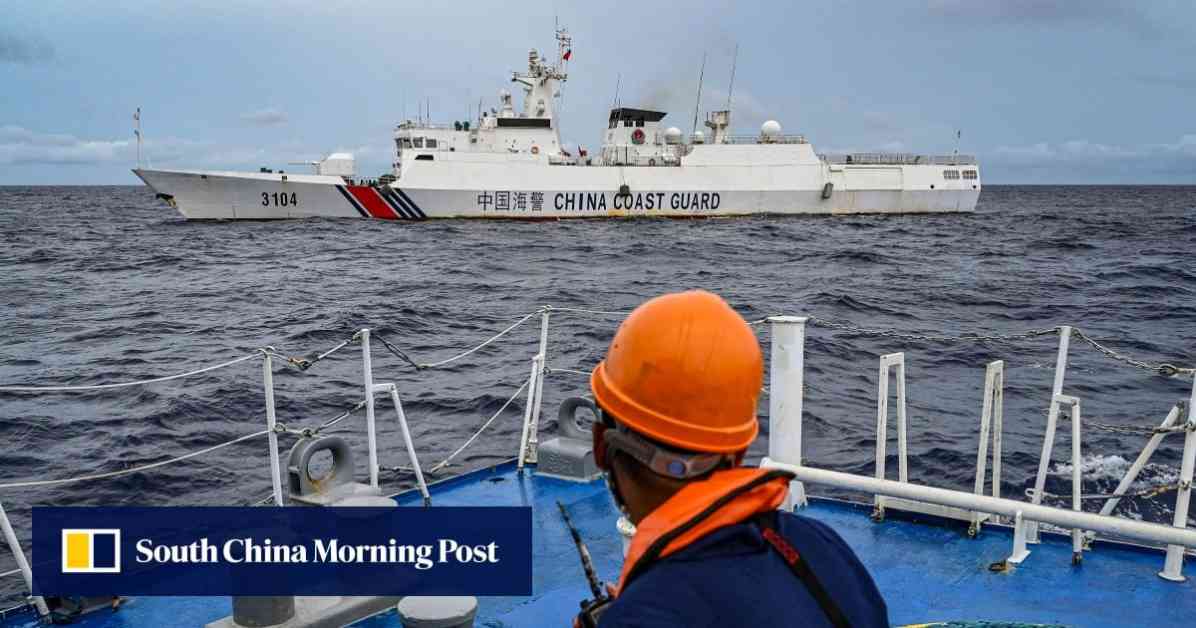China and the Philippines are once again at odds over the Sabina Shoal in the South China Sea, with tensions escalating as the Philippines plans its next move in the disputed waters. Observers are warning that this latest development could lead to a potential conflict between the two countries, both of which claim sovereignty over the area.
The recent escalation began when the Philippines recalled the BRP Teresa Magbanua from Sabina Shoal, prompting a strong response from China. Beijing stated that its coastguard would continue to conduct law enforcement activities in the waters around the shoal to protect its territorial sovereignty and maritime interests. This move by China has raised concerns about the possibility of a military confrontation in the already volatile region.
In response to China’s actions, the Philippines has deployed a replacement vessel to the area, but has chosen not to disclose its exact location. This strategic decision is aimed at preventing Chinese vessels from intercepting the new ship, as National Maritime Council spokesman Alexander Lopez explained, “It’s better for them to guess where the ship is. Because if they know where it is, they will go there. It’s like a magnet. So, that is our approach. We will not reveal where it is.”
The Historical Context
The dispute over the Sabina Shoal is part of a larger territorial conflict in the South China Sea, where multiple countries, including China, the Philippines, Vietnam, Malaysia, and Taiwan, have competing claims. The area is rich in natural resources and is a critical maritime trade route, making it a valuable strategic asset for the countries that control it.
The Philippines and China have a long history of tensions in the South China Sea, with both countries asserting their claims through military patrols, diplomatic protests, and the construction of artificial islands. The Sabina Shoal, also known as the Julian Felipe Reef, has been a particularly contentious area, with both countries conducting patrols and asserting their presence in the region.
Despite international efforts to resolve the dispute through peaceful means, such as arbitration under the United Nations Convention on the Law of the Sea (UNCLOS), tensions continue to simmer between China and the Philippines. The recent escalation at Sabina Shoal is a stark reminder of the ongoing challenges in the region and the potential for conflict to erupt at any moment.
The Stakes Involved
The standoff at Sabina Shoal has significant implications for both China and the Philippines, as well as for the broader geopolitical landscape in the South China Sea. For China, the area represents a crucial strategic foothold in its efforts to assert dominance over the region and secure its maritime interests. By maintaining a presence at Sabina Shoal, China aims to strengthen its territorial claims and solidify its control over the contested waters.
On the other hand, the Philippines sees the Sabina Shoal as part of its exclusive economic zone and a vital component of its maritime security. By challenging China’s presence in the area and deploying vessels to assert its sovereignty, the Philippines is sending a clear message that it will not back down in the face of Chinese aggression. The outcome of this latest standoff could have far-reaching consequences for the balance of power in the South China Sea and the future of regional security.
The Path to De-escalation
As tensions continue to rise at Sabina Shoal, it is imperative for both China and the Philippines to find a peaceful resolution to the dispute and prevent the situation from escalating further. Diplomatic channels must be kept open to facilitate dialogue and negotiation, with a focus on finding mutually acceptable solutions that respect the rights and interests of all parties involved.
International actors, including the United States, the European Union, and ASEAN, can play a crucial role in mediating the dispute and promoting stability in the South China Sea. By encouraging dialogue, upholding international law, and promoting confidence-building measures, these external powers can help prevent the situation from spiraling out of control and reduce the risk of conflict in the region.
Ultimately, the standoff at Sabina Shoal underscores the urgent need for a comprehensive and durable solution to the territorial disputes in the South China Sea. By prioritizing dialogue, cooperation, and respect for international law, China and the Philippines can work together to defuse tensions, build trust, and promote peace and stability in the region. Only through a concerted effort to find common ground and address the underlying causes of the conflict can both countries hope to avoid the specter of armed confrontation and pave the way for a more secure and prosperous future for all parties involved.



















